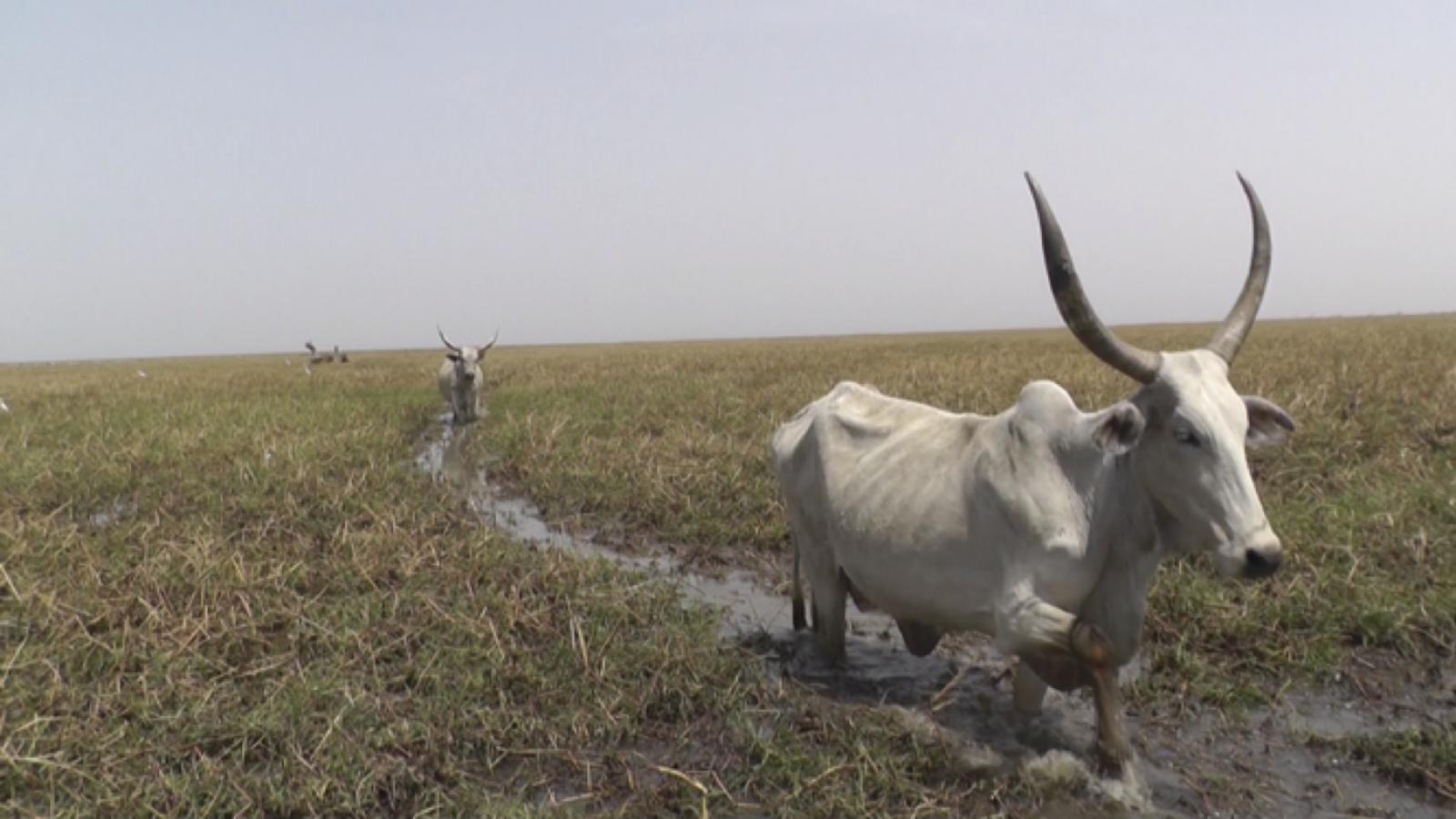One Year, Two Plains
One Year, Two Plains a film by Mouadjamou Ahmadou and Albert K. Drent (2015), produced by the Visual Anthropology Laboratory at the University of Maroua, published by Columbus, Ohio: Knowledge Bank, The Ohio State University. 13:52 minutes.
The Logone Floodplain in the Far North Region of Cameroon is a key resource area for mobile pastoralists in the Chad Basin. The floodplain is seasonally flooded from October through December when the River Logone overflows its banks. Every year after the floodwaters recede thousands of pastoralists with hundreds of thousands of cattle move into the floodplain.
In 1979 the Cameroonian government constructed a embankment along the Logone River and a dam between Guirvidig and Pouss to create a large lake for an irrigated rice cultivation project (SEMRY II). The Maga Dam led to a significant reduction in quality and quantity of pastures in the Logone floodplain but also created new pastures around the newly created Lake Maga.
The main hydrological difference between the lakeside pastures of Lake Maga and the Logone Floodplain is the duration and timing of the flooding. In the latter the floods recede completely after a few months, whereas the flooding in the Lake Maga pastures is controlled primarily by the release of water for irrigating the rice fields. As a result pastures in Lake Maga are flooded for a much longer period and this has significant consequences for the dynamics of this coupled human and natural system.
Today mobile pastoralists use both the pastures in the Logone Floodplain and in the Lake Maga area. Pastoralists move into the Logone Floodplain in the cold dry season (daBBunde). Then when the floods recede and the grasses dry, a large number of pastoralists move to the Lake Maga area.
However, very few pastoralists spend the entire dry season in the Lake Maga area because of the numerous biting flies in the early dry season. Moreover, pastoralists have noted that herds around Lake Maga have lower reproductive rates, lower milk production, and higher calf mortality than in the adjacent Logone Floodplain. They explain these effects in terms of lower forage quality, higher parasite loads, and insects that spread diseases and prevent the cattle from sleeping and grazing properly.
We are currently conducting a pilot study in which we combine ethnographic, ecological, epidemiological, and spatial analyses to evaluate the nutritional value of grasses and the presence of parasites in lakeside floodplains by comparing cattle and pastures around Lake Maga and in the Logone Floodplain.
The film One Year, Two Plains is the product of a collaboration between Mouazamou Ahmadou, Albert Drent, and myself. Mouazamou Ahmadou is a visual anthropologist at Maroua University and Albert K. Drent is a Ph.D. student at the Max Planck Institute for Social Anthropology.
The focus of the film is on exploring the differences in the pastures in the two seasonal grazing areas, e.g., quality and quantity of forage, problems of parasites and other pests, water quality and their relation to animal health and productivity. The film thus shows pastoralists from different groups describing their own practices and their perspective on the differences between herding in the Logone Floodplain (called Yaayre in Fulfulde) and herding in the Lake Maga area (called Ndiyam Shinwa in Fulfulde). The shots of the Logone Floodplain show mostly dry (yellow) grasses, or burned pastures with regrowth of grasses, and rivers. The shots of the Lake Maga area have mostly green pastures that are in water, trees under which herders find shade, and ponds in which herders and animals find drinking water.
Another theme that is touched upon in this film is the idea of adaptation and habitude (woowugo in Fulfulde). Pastoralists explain that cattle and herders become adapted to the pastures that they habitually graze. When Lake Maga was created cattle initially failed to thrive on the new pastures because they needed to adapt their grazing habits to the more humid pastures. The concept of habitude explains why some herds in the Lake Maga perform better than others – their cattle have become used to grazing in standing water.
Further reading
Moritz, Mark, Ian M. Hamilton, Paul Scholte, Yu-Jen Chen. 2014. Ideal Free Distributions of Mobile Pastoralists within Multiple Seasonal Grazing Areas. Rangeland Ecology & Management. 67(6):641-649.
Moritz, Mark, Paul Scholte, Ian M. Hamilton and Saïdou Kari. (2013). Open Access, Open Systems: Pastoral Management of Common-Pool Resources in the Chad Basin. Human Ecology. 41(3):351-365.
Moritz, Mark, Eric Soma, Paul Scholte, Ningchuan Xiao, Todd Juran, Leah Taylor, and Saïdou Kari. (2010). An Integrated Approach to Modeling Grazing Pressure in Pastoral Systems: The Case of the Logone Floodplain (Cameroon). Human Ecology 38(6):775-789.

